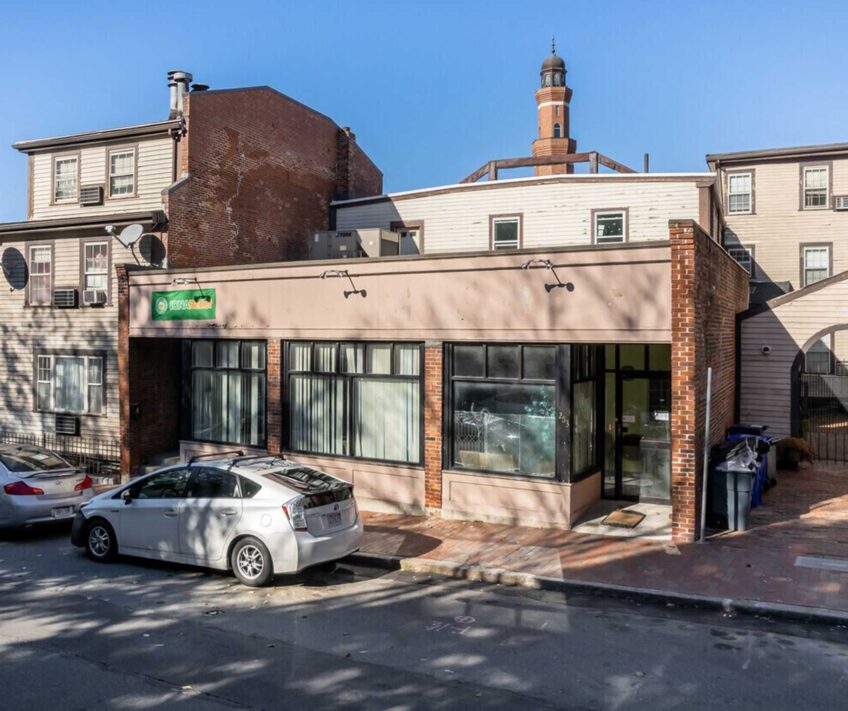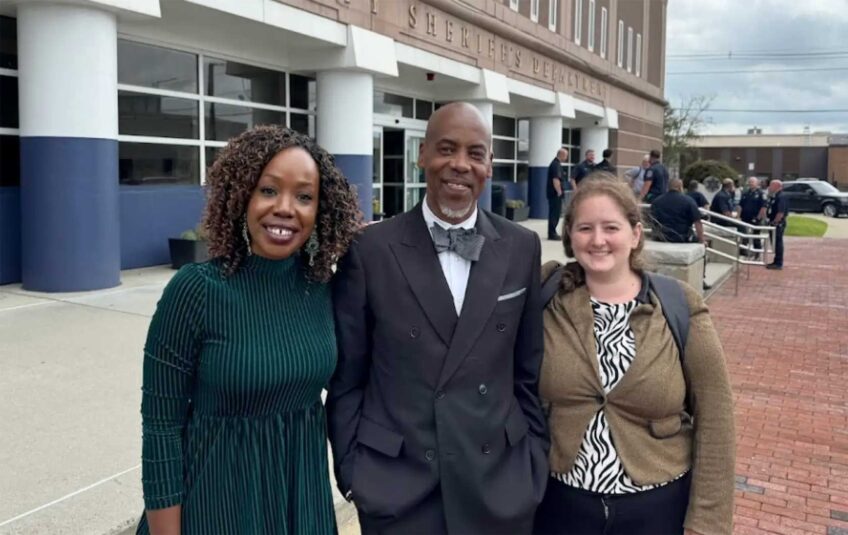As schools shut down for the pandemic in 2020, evaluators from the Massachusetts Department of Elementary and Secondary Education finished their six-year review of the Brockton Public Schools. The reviewers were critical of the district.
“The district has struggled to allocate limited resources” as a result of unstable “leadership, systems, and processes,” the executive summary concludes. Staffing cuts — 212 jobs, including leadership roles, from 2014 to 2019, were written off.
The DESE reviewers interpreted problems differently than local leaders, who sought funding for teachers. Conveniently, the state’s advice didn’t cost much.
Brockton’s experience illustrates state education policy. The crisis last year at Brockton High, where many students idled in cafeterias daily, resulted.
Reviewers faulted unfilled administrative jobs in 2018 for undermining effective instruction. Apparently part of a pattern, they said, “central office positions” had decreased since 2015.
“The district’s decision to reduce leadership … in order to protect teaching positions has resulted in unstable systems and practices to create and drive improvement initiatives,” the report concluded. Reviewers cited a “cascading impact” of reduced leadership and supervision.
“Consequently,” they wrote, “student achievement continues to deteriorate.”
“Not only administrators got cut but the classroom teachers got cut,” recalled Brockton’s Michael Thomas. Thomas served as deputy superintendent of Brockton Public Schools during big cutbacks before being promoted to superintendent in December 2019. “Before then, it was 28 years” with the Brockton Public Schools, he said.
“We cut over $68 million of funding in an eight-year time,” Thomas once summarized for the school committee. Staffed by 1,144 teachers in 2015, Brockton had 963 last year. Since 2015, the student-to-teacher ratio is up in Brockton, while down in Massachusetts overall.
“When you cut that much money,” Thomas said, “your goal is basically, you cut as far away from the classroom as you can.”
Personnel are precious, he said: “You’re cutting technology” and “stuff” in order to “save people.” He recalled a “lack of high quality instructional materials” and said committed teachers were “spending their own money.”
“When you’re laying people off every year for six years straight, that just kills your culture,” he said. “Those times were very difficult.”
In the 2020 report, reviewers described a “continual decline in academic outcomes” from 2013, preceding administrative cuts. Whether decision quality or resource scarcity explains the trend could depend on where you stand.
The DESE was certain: Irresponsible locals were blaming funding. “By focusing on external factors such as budget challenges rather than analyzing data and focusing on improving teaching and learning, district leaders have lowered expectations for themselves and students,” reviewers wrote.
Brockton’s annual school spending rarely exceeds the state-set minimum budget level by even 2%. Massachusetts funds about 80% of the city’s annual school spending.
Evaluators harped on data. School committee decisions, district plans, district leaders and the training calendar, they recommended, must be data-informed. Parents need information about student progress and the community needs school performance information.
Coinciding with the COVID-19 pandemic which devastated Brockton, the DESE review, published in October 2020, was released while burgeoning, if unrealistic, optimism anticipated that money and help were on the way. The Student Opportunity Act (SOA) had been passed in November 2019 and Brockton was expected to net $21 million in new money for FY21.
Thomas said his predecessor, Kathy Smith, “was a driving force” behind the SOA. “She was very vocal with other superintendents of urban districts about the lack of funding.”
The year 2020 concluded with an agreement. A memorandum of understanding (MOU) committed DESE and Brockton to meet frequently, collaboratively develop a district improvement plan and agree to a consultant-coach on plan implementation. DESE would “provide resources” through “initiatives and funding” aligned with the plan’s goals. In addition, DESE would present to the Brockton School Committee twice-yearly “a report … including progress toward key metrics.”
DESE presented three times in the three years before Open Architects was hired to scrutinize Brockton’s books. At no time did they report progress towards any metrics. Instead, DESE emphasized its expectations and outlined local responsibilities. Instead of modeling data analysis, the presentations added on accountability.
In 2021, a presenter reiterated criticism of the school committee: The elimination of administrators undermined instruction quality. Former school committee member Tom Minichiello, now a Brockton city councilor, later replied, “Our goal, quite honestly, was trying to maintain safe classrooms with adequate staffing to ensure the safety of our students.”
The state has “a stake in how Brockton is doing and how Brockton kids are doing,” Thomas explained, “and that helps with funding, that helps with grants that DESE has discretion over.”
Thomas credited a state grant with securing a new pre-K through grade 5 English curriculum. He praised DESE’s collaboration.
“Even though it was a good partnership with DESE,” he said, “you can’t wait for them to bring you information or push you to do things. Let’s be realistic, it’s us that has to do the work.”
Delayed by the pandemic, state aid increased only $2.7 million in FY21.
“It was frustrating,” Thomas recalled, “because you were expecting to really move forward and hire more people, lower class size [and help] struggling learners.”
No matter, Brockton’s next step was planning. Eleven schools in Brockton had turnaround plans at the time; that number is now down to five. The district improvement plan, also called a strategic plan, was in the works. And the SOA called for a three-year plan of how to spend the money.
Planning, Thomas said, “brought people together” to “look to the bright future and build something” that would “help kids and help close their achievement gap.” The process was positive, he said: “It was a good feeling.”
In large districts like Brockton, Lynn and Springfield, initial SOA plans committed to “increasing personnel and services to support holistic student needs.” This was one of the original programs proposed by DESE. Vaguely worded, the plan appeared to open the door for re-staffing the classrooms.
And Brockton did re-staff, adding 126 teachers for FY22. The student-to-teacher ratio dropped to 13.7, a level last seen in FY08. Back then, Brockton’s ratio equaled the state average.
The SOA allows for “hiring school personnel that best support improved student performance.” Few districts cite the law in lieu of DESE’s proposed programs.
In subsequent guidance, the personnel program disappeared. Notes from a presentation on planning for 2021-22 funding say it was renamed “to reflect the elevated focus on social emotional learning and mental health.” Effectively, it narrowly allows for support staff, like clinicians and counselors.
“It was kind of a bait-and-switch,” Thomas said. “Part of socio-emotional well-being is having smaller class sizes. DESE has done a good job preaching how they really want to focus on socio-emotional [learning], but they haven’t really provided the resources to do that.”
Brockton’s SOA plan also recommended inclusive classrooms and increased co-teaching, which fell by the wayside in later updates. One key component of the first three-year plan envisioned a certified teacher and full-time paraprofessional in each early ed classroom, with pre-K classes limited to 20 students. Brockton reiterated the commitment to paraprofessionals in FY22.
Incorporating high-needs students into general education classrooms is staff-intensive.
“They need smaller class sizes, they need paras in the room,” Thomas said. “That’s a lot of adults, and it costs a lot of money.”
Brockton was years behind on staffing the first adult in the classroom, much less the second and third adults. Three years into SOA implementation, the district had fewer teachers than before the new money kicked in.
New SOA plans were due out in July.
In public and to this day, Thomas takes responsibility for outcomes in Brockton. In one of his last school committee meetings at the helm, he committed to raising the percentage of teachers who receive performance evaluations.
An interim superintendent, Dr. Priya Tahiliani, was hired in July.
In the last two school years, Brockton has updated its MOU with DESE. But you won’t hear much talk of “partnership” in school committee meetings any more. The recent agreements ratchet up local responsibility. Thomas wonders whether that’s helpful.
“It’s pressure every day, whether the state was hanging over your head or not,” he said. “It’s pressure because you care about these kids and their families. That’s the pressure of being an urban educator.”






